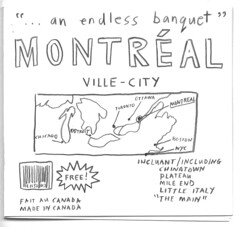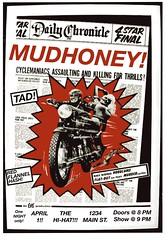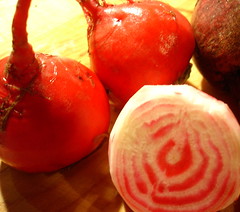The Red and the White
 fig. a: the red & the white
fig. a: the red & the white
There’s no way I can pin this date down exactly, but I’d venture a guess that this is the 20th anniversary of my relationship with red beans & rice. Love affair, actually. Passionate, even. This is going to make me sound like some kind of Legume Lothario, but I’m kind of crazy about the beans. Black, brown, white, speckled, black-eyed, green. You name ‘em. But I’ve got a special place in my heart for red beans. A staple of enormous cultural significance all across the Southern United States and a good portion of the Caribbean, red beans & rice have never really caught on and been commodified in the same way that black beans and pinto beans have. (Apparently some things are sacred. Praise the Lord!) Our relationship has never grown stale, it’s never become banal. Somehow they still taste special.
And they’ve been tasting especially special recently, because after years of my home recipe being a perfectly respectable vegetarian version, this year (to mark our 20th anniversary?) I finally started experimenting with that combination of herbs, spices, and pork (!) that is so central to the Southern tradition of red beans & rice. And the version that’s been blowing my mind recently is a version that includes the spicy tang of homemade pickled pork (!!).
All great dishes have their schools. Old and new. Public and private. Conventional and experimental. Red beans & rice is no exception, and (in the South, at least) one of these schools is the Pickled Pork School.
The bottom line is that if you want to make a true Southern version, it’s gotta have that herbal quality, it's gotta have some heat, and it's gotta involve some pork--nothing fancy, just a ham bone, or some ribs, or some sausage (and maybe all three). In other words, the kind of "scrap" cuts that were essential to African diasporic cuisine in the antebellum South (read: the remarkable, against-all-odds cuisine of the slavery era). The resultant dish is one that’s rich in protein and vitamins. Make a true Southern version and it’ll also have that luscious quality that has made the dish one of the most soulful of Soul Food dishes for a good 200-300 years.
The following red beans & rice recipe makes great use of your very own homemade pickled pork (spare ribs, specifically). Feel free to add a ham bone and/or some smoked sausages (Cajun, kielbasa) to the mix. Also, feel free to use this red beans recipe as the basis for your very own vegetarian version. It's a lot more fully rounded that your standard issue red beans & rice recipe (it's definitely more herbal than the version I'd been making), and you won't be disappointed.
Pickled Pork
1/2 cup mustard seed
1 tbsp celery seed
1 dried hot pepper
1 quart distilled white vinegar
1 bay leaf
1 tbsp kosher salt
12 whole peppercorns
6 cloves of garlic, peeled and crushed
2 1/2 pounds spare ribs, cut into individual ribs (you can also use boneless pork butt, if you prefer)
Combine all the ingredients, with the exception of the spare ribs, in a non-reactive pot and bring to a boil. Simmer for 3 minutes and let cool. When the pickling liquid has reached room temperature, place the pork in a deep crock or bowl and cover it with the liquid. Stir with a spoon to make sure that all the air bubbles have been released. Place a small plate inside the crock or bowl to keep the meat below the surface of the liquid. Cover with plastic wrap and place it in the refrigerator to cure for at least 3 days, stirring occasionally. A longer cure will result in a tangier pickled pork. Three to four days is about perfect for me. Use within two weeks.
[note: you only need half this recipe for the red beans & rice recipe below, so you may want to cut the recipe in half if you're not sure what you might do with the remaining pickled pork. I've found mine to be versatile--think Southern-style greens, Southern-style stews, etc.]fig. b: the red & the green
Red Beans & Rice
1 pound of red kidney beans (preferably the smaller variety), soaked overnight and cooked until just tender (this will depend on the beans; recently the beans I've been using having been cooking in under 2 hours; for further instructions look here)
1 tbsp bacon fat or vegetable oil or olive oil
2 medium onions
2 large bell pepper, one red and one green, chopped
2 medium carrots, peeled and diced
2 celery stalks, diced
1 bunch flat-leaf parsley, finely chopped
1 bunch green onions, finely chopped, including the green tops
4 cloves of garlic, minced
1 sprig fresh thyme
1 or 2 bay leaves
at least 1 small hot red pepper, finely chopped
1 - 1 1/2 lbs pickled pork
salt and freshly ground pepper to taste
enough cooked rice to feed all comers
Heat the fat or oil in a large pot over medium heat. Sauté the onions for 3-5 minutes, then add the bell pepper, the carrots, and the celery and cook for another 5 minutes, until the onion has begun to turn translucent, the other vegetables have softened slightly, and the flavors have begun to meld. Add the parsley, half the green onions (reserve the rest for serving time), the garlic, the thyme, the bay leaves and the hot red pepper, stir and sauté for another minute. Add the prepared beans, the cooking liquid, and the pickled pork. Bring the cooking liquid to a simmer and taste for seasoning. Add salt and pepper to taste. Simmer the beans for another 1 1/2- 2 hours, checking the liquid occasionally and adding more water if necessary. When you check the beans from time to time, use a wooden spoon to smash some of the beans against the side of the pot, then stir them back into the mixture, creating a thicker, richer broth.
When your beans are just about ready--the legumes ultra-tender, the broth thick and luscious--remove the thyme spring and the bay leaves and cook your rice. Let the rice sit on the stove for an additional 5 minutes after it’s finished cooking to let the rice dry out a little, and to drive yourself even more insane with anticipation. Serve mounds of rice in bowls, covering the rice with generous ladlefuls of the red beans and their broth, and sprinkling some of the reserved green onions (remember them?) on top. Serve with a salad, a crusty loaf of bread or, better yet, some piping-hot cornbread, and a bottle or two of your favorite hot sauce to spice things up even further.
[thanks to John Thorne’s Serious Pig for the serious pickled pork recipe and for some serious inspiration (yet again)]
aj

















